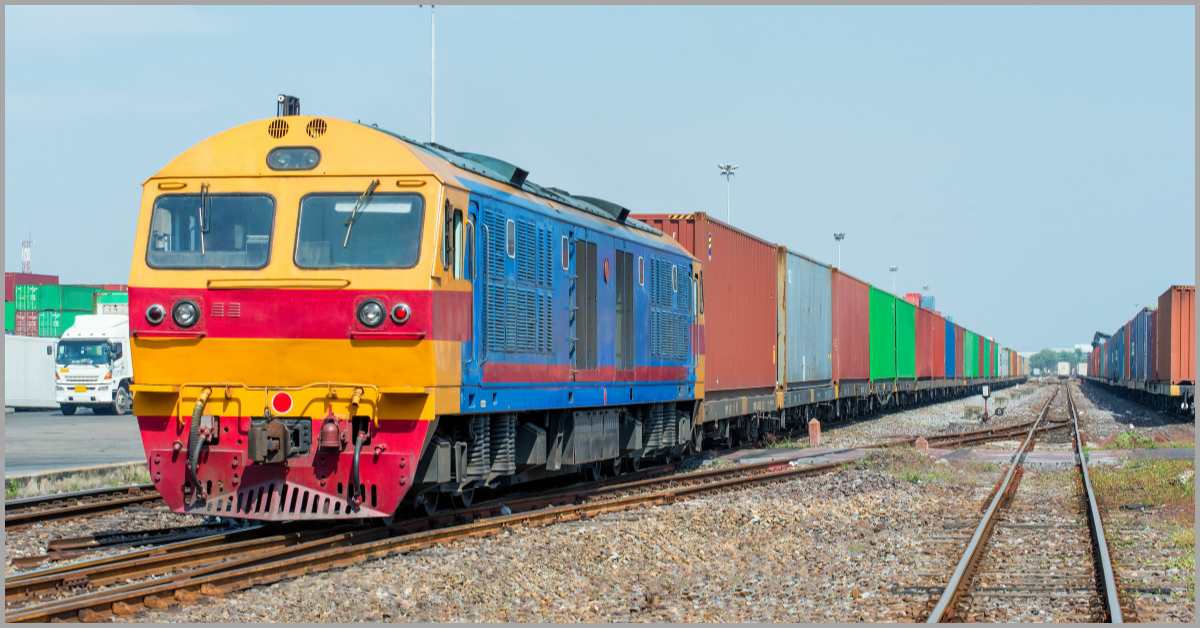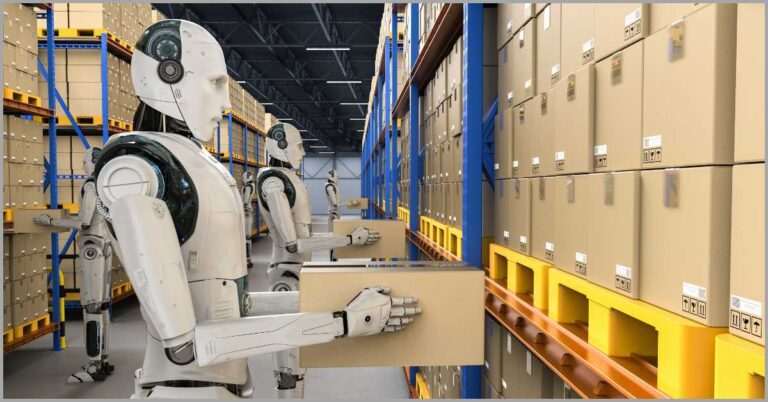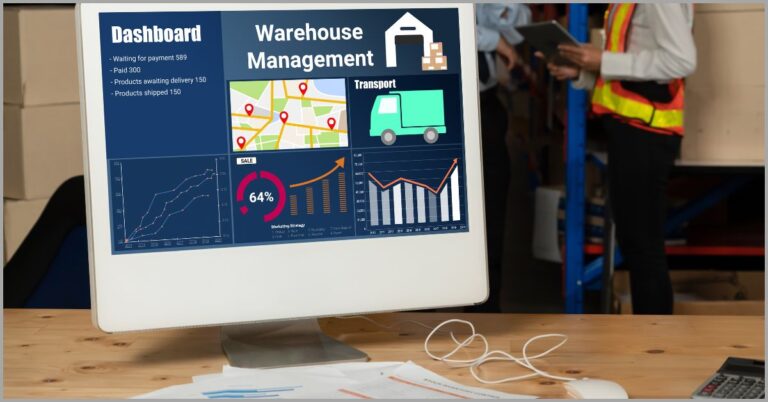10 Rail Transloading Safety Measures to Protect Your Workforce in 2025
Interested in preventing transloading accidents?
Injuries can occur due to the risky nature of rail transload freight shipping operations.
When accidents happen, your transloading business may suffer massive financial losses from lost productivity, worker compensation and protracted legal battles.
A Statista survey discovered there were 265,700 occupational injuries for transportation and warehousing businesses in 2023. Unfortunately, these companies lost millions because of these incidents.
By focusing on improving rail transloading safety, you can reduce the number of accidents in your workflow. This means having to deal with fewer worker compensation claims, medical expenses and even regulatory fines.
Aside from these direct costs, preventing transloading accidents also results in fewer interruptions and safeguards customer trust to prevent any potential loss of business.
If you’d like to enhance efficiency, check out this article I wrote about essential best practices for dock and yard management for increasing throughput.
In this article, we’ll discuss crucial rail transloading safety measures to protect your workforce in 2025 and help maximize productivity for your transloading business.
Let’s get started.
1. Streamline communication
Are your communication strategies effective?
Rail transloading requires a coordinated effort between switch personnel, transload operators and even railway carriers to ensure everything goes according to plan.
If a breakdown in communication occurs, there’s poor coordination of equipment movement, which can result in injuries to your ground crews and offloaders.
A recent survey by Grammarly showed 72% of business leaders revealed their teams struggle to communicate. As a result, the companies have lost a lot of revenue due to poor collaboration and even witnessed more workplace mistakes & accidents as well.
When miscommunication happens, your workers may not perform transloading operations or effectively communicate potential hazards to each other.
Fortunately, there are many ways you can streamline communication.
By leveraging a great transloading software, for instance, you can create a centralized communication hub. Here, your transloading crews can easily communicate and collaborate with dock workers and shippers in real time.
The result is better coordination to avoid misunderstandings that create safety risks.
So why not start your free transloads.co trial today? Use our software to streamline communication processes and improve your operations.
With our software, you can even provide clear instructions to field teams due its mobile accessibility features. This also helps to ensure that you can provide clear and consistent instructions for field teams to avoid ambiguities, which can lead to accidents.
2. Secure railcars properly
Unsecure railcars pose very huge safety risks.
This is because they are prone to sudden and unexpected movements, with railcars likely to roll away when workers are still loading or unloading various commodities.
So without proper securement, railcars can move unexpectedly, possibly resulting in derailment and collision with transloading operators.
Unfortunately, there were at least 995 railroad fatalities in 2023, according to a study by the National Safety Council. The most alarming part about this statistics is that it represented a 10% increase from the past year, showing a worrying, upward trend.
Some of these accidents took place in transloading yards, partly because railcars weren’t well secured, resulting in expected movements and collisions.
But how do you secure railcars in your transload yard?
First, it’s important to engage the handbrakes on each railcar before you commence loading or offloading. After you’ve done this, I recommend testing for movement to ensure that the brakes work appropriately and reduce the risk of unintentional rolls.
You should also consider using special rail to truck transloading equipment, such as wheel chocks or sates. When placed against the wheels of the railcar, they can provide surplus reinforcement to complement the hand brakes.
Furthermore, it’s crucial to monitor environmental factors and implement additional measures to safeguard against rain, wind or snow, which can affect railcar stability.
3. Ensure staff use protective equipment
Do your staff use protective personal equipment (PPE)?
For your transload operators who are in direct contact with freight during loading and unloading operations, having the right PPE is essential to help improve rail transloading safety and protect against a host of threats.
Without proper personal protective equipment, your workers become more susceptible to head and foot injuries resulting from the impact of falling cargo.
An NIH study revealed that over 40% of workers don’t use PPE during work. This leaves them more exposed and vulnerable to various hazards such as falling objects coming from poorly secured freight.
While these equipment can’t prevent accidents, they can reduce the severity of injuries.
One of the most important PPEs for your rail transloaders is a hard hat or safety helmet.
This can help protect the head from impacts resulting from bumps and failing objects and even from collisions with other transloading equipment such as forklifts and cranes.
In order to make railroad logistics more efficient and safer, you workers also need to have slip-resistant, steel-toed boots to safeguard against slips and crashing hazards.
Other personal protective equipment to consider for your transload yard include gloves to protect from chemical exposure and safety glasses for eye protection. That said, you should ensure the PPEs you buy meet industry standards for regulatory compliance.
4. Maintain transloading equipment
Your reload yard may rely on various transloading equipment.
This may include anything from transloading pumps for transferring liquid bulk goods to forklifts for efficiently moving pallets around your transload warehouse. While useful, these tools can be just as much of a liability as they are an asset.
For instance, bad equipment such as malfunctioning cranes or forklift for instance, can result in unexpected load drops that can cause crush injuries.
A study by Statista discovered there were 84 major workplace injuries in Singapore in 2023. While some of these issues boiled down to negligence and operator fatigue, equipment malfunctions due to poor maintenance contributed significantly.
So what are some tips for inspecting transloading tools?
Although you should inspect transload shipping equipment before each job, it’s also important to develop a periodic and preventive maintenance schedule. This helps you to identify and solve minor issues before they escalate to life-threatening problems.
You could do this on a weekly or monthly basis, although the general rule of thumb is that more frequent checks are in order if you use a specific equipment quite heavily. For instance, I recommend inspecting heavy-usage tools like forklifts daily.
Fortunately, most of these tools already have manufacturer recommendations in place, so can follow these rules to ensure that equipment is always in good working order.
5. Implement spill containment measures
What spill containment measures do you use?
Spills can be triggers for a variety of accidents at your transloading yard, which can lead to devastating environmental and financial consequences. For example, they can result in exposure to hazardous chemicals that can cause irritation & respiratory issues.
Additionally, when transloading flammable products like oil, gasoline and industrial chemicals, spills can increase the risk of fires and explosions.
It’s alarming to note that 21% of business insurance claims worldwide are due to workplace fires and explosions, according to a study by Allianz Commercial. This makes it the leading cause of corporate insurance claims.
When such incidents occur, there may be huge property damages and loss of lives.
The first step to solving spill hazards lies in creating a spill prevention & containment plan. Moreover, you need to also purchase various spill containment equipment like leak diverts and spill pallets which help to contain and isolate any spills.
If you’d like to combat spill hazards, a great transloading software is key. It can help you track the movement of dangerous goods to ensure appropriate handling & storage.
So be sure to begin your free transloads.co trial to improve transloading safety. With our software, you get real-time monitoring, arming you with the information necessary from improving hazard identification and risk assessment processes.
6. Use clear signage and markings
Signages play a huge role in rail transloading.
They help to ensure that your transload operators and dock workers are always aware of the emergency protocols, safe operating procedures and even potential hazards posed by the commodities they’re about to transload.
If your rail transloading yard doesn’t have proper signage and markings, the risk of human errors and the mishandling of dangerous goods massively increases.
The sad reality is that over 40% of safety hazards often go unnoticed, according to a study by North Carolina State University. Safety signages can, however, change this situation for the better by offering visual warnings to your staff about dangers in an area.
So how do you create great signages and markings?
Well, you should stick to standardized symbols & colors in shipping. This involves using universal symbols and color codes for toxic, flammable and other dangerous goods to improve rail transloading safety by ensuring easy hazard identification.
By placing these signs at key locations like butane transloading shipping zones, loading bays and other high risk areas, workers can know how to act in certain areas.
When creating signages and markings, you should use large and clear fonts that you can easily read from a distance. It also helps to ensure a high contrast between background and text, e.g. red text on a black background, to improve legibility.
7. Improve visibility and lighting
Can you say that your transload facility is well-lit?
Poor visibility can make it difficult for you to spot oncoming railcars, forklifts, or even other workers within the area. It can also lead to a poor assessment of distance between obstacles, increasing the risk of your staff being struck by machinery.
Furthermore, when lighting is extremely poor at your transload shipping yard, blind spots grow rampant, which can lead to accidents like trips and falls.
A survey by Travelers found that 23% of all workplace injuries are due to trips, slips and falls. This makes them the second biggest cause of accidents, but you can prevent these injuries & improve rail transloading safety overall by improving lighting conditions.
Before you can embark on any improvements, I suggest that you first conduct a lighting audit. This will help you identify parts of your yard that need additional lighting such as rail tracks, loading zones, pedestrian walkways and high-traffic areas, among others.
If you’ve set up a transloading warehouse with rail siding to perform efficient rail transloading indoors, you’ll also want to factor it into your lighting audit.
For loading docks, you’ll find that floodlights are great for providing intense and focused illumination particularly at night or during days with poor weather. You should also consider task lighting to enable safer railcar inspections and material handling.
8. Standardize transloading procedures
Rail transloading is a very high-risk affair.
It gets even worse when safety practices are inconsistent, since your transloading operators may fail to adhere to proper procedures. This is partly due to the lack of unclear instructions which can lead to poor interpretations of how to go about tasks.
So if your transloading business doesn’t set clear and consistent protocols, the risk of workers engaging in unsafe loading and unloading practices increases.
Conversely, a study by BOC Group reported that 49% of businesses noticed improved risk management when they documented and standardized their processes. This is because clear instructions lead to better adherence to safety protocols and practices.
But how do you create standard operating procedures (SOPs) ?
I recommend creating separate safety sheets and SOPs for each phase of the transloading process. For instance, you can document task-specific SOPs for railcar inspections, load securement, or hazardous material handling, among others.
It also helps to ensure that these safety sheets are readily available to field workers, and here’s where the best transload management software can help. They empower you to digitize and store these documents in the cloud to enable remote access.
That said, your SOP documents should describe safety checks, emergency procedures, PPEs to use and other vital information for performing the task safely and efficiently.
9. Conduct pre-switching inspections
Do you often need to switch railcars in your yard?
Railcar switching is an important logistics practice, which enables freight consolidation and deconsolidation. It’s also a great strategy that can help you get the best carrier rates and also minimize congestion to keep freight movement flowing.
While a vital strategy, if you fail to conduct proper pre-switching inspections, wheel car defects and other potentially dangerous issues can fly under the radar.
In fact, wheel car and bearing defects account for 54% of railcar derailments, going by a Sage Journal study. When you regularly conduct inspections, you can easily spot these problems early and prevent them from snowballing into major accidents.
In terms of what to look for when carrying out pre-switching inspections, you’ll want to examine couplers, tracks and railcars for obstructions, debris and damages. In fact, you should make this a standard procedure for your transloading operations.
That said, I also recommend using a top transloading software, which can help improve rail transloading safety. You can use it to create a digital checklist for performing pre-switching inspections more efficiently.
So go ahead and start your free transloads.co trial now to improve your switching inspections, and operational safety at large.
With our software, you can even easily delegate and schedule recurring pre-switching inspections while accessing real-time reports that makes it easy to follow up.
10. Perform emergency drills
So what is an emergency drill and why is it important?
An emergency drill is a mock exercise which simulates a potential emergency situation at your facility. Its primary purpose is to gauge worker preparedness and also to determine opportunities for improvement with your emergency response protocols.
If your transloading business doesn’t carry out emergency drills often enough, transload operators may lack familiarity with emergency procedures.
At least 33% of employees are missing key information about safety procedures and are unsure how to respond to workplace disasters, according to a survey by Rave Mobile Safety. This is why it’s critical to practice for various risk scenarios often.
With emergency drills, your transload operators get to practice emergency procedures regularly so that they develop instinctive responses and muscle memory.
The result is faster response times to disaster and reduced panic in the event that something goes wrong at your rail transload yard.
In order to conduct the right emergency drills, you should first identify the types of emergencies that can occur. For instance, if you transload shipping containers often that are very heavy, railcar derailment is something you’ll want to think about.
Other key emergence scenarios to practice for in order to improve rail transloading safety include chemical spills and medical emergencies such as heart attacks.
Conclusion
Poor workplace safety demoralizes your staff.
When accidents occur often, they erode trust in your rail transloading business.
Ultimately, a poor track record of workplace safety may increase staff attrition, while damaging your reputation to make it challenging to attract new talent.
A survey by All Voices brought to light that 41% of employees have left an organization because of unsafe working conditions. So it shows just how important rail transloading safety is for your business.
This becomes much easier to achieve if you leverage a great transload management software like transloads.co, which gives you real-time data about freight movements and personnel to improve safety monitoring.
So make your business safer and start your free transloads.co trial today to reduce the risk of accidents at your transloading yard.
With our software, you can streamline communication to avoid mishaps and even digitize and share safety manuals and instructions easily to improve safety awareness.



